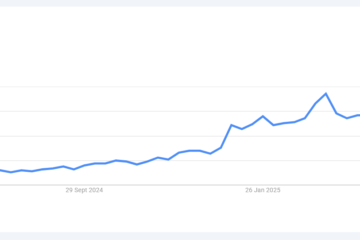Today’s web isn’t always a place to be. Sites greet you with a pop-over that asks for consent to their cookie policy, leaving you with tabula ads that say “A weird trick!” promises to To cure your diseases. Social media sites are tuned for engagement, and few things are more engaging than combat. Today it seems that people want to quarrel. I have seen flame wars in birds.
Article continues below
This tension often conflicts with the goals of the site. If we are providing help and advice to users, we don’t want those users to argue with each other. If we present news about the latest research, we want readers to feel at ease. If we promote upcoming marches, we want our core supporters to feel comfortable and we want curious newcomers to feel welcome.
In a conference study on the history of the Web, I looked to the beginnings of computer science in Vienna (1928-1934) for a case study of the importance of determinism in a research community and the devastating consequences of its loss. This story has interesting implications for web environments that promote contentious, difficult (and sometimes disagreeable) interactions between people.
Although people were thinking of calculating engines and thinking machines from antiquity, computing was really taking off in Depression-era Vienna. The people working on the theory were not interested in building machines. They wanted to suspend the limits of reason in the absence of divine authority. If we couldn’t rely on God or Aristotle to tell us how to think, could we instead make arguments that were self-sufficient and demonstrably correct? Do we believe that mathematics is constant? Are there things that are true but cannot be expressed in language?
The basic ideas were worked out in weekly meetings (Thursdays at 6) of a group called the Vienna Circle. They met in the office of Professor Moritz Slack at the University of Vienna to discuss problems in philosophy, mathematics and language. The intersection of physics and philosophy had long been a feature of this Viennese department, and this work placed him among world leaders. Schilck’s colleague Hans Hahn was a central participant, and by 1928 Hahn brought along his graduate students Karl Menger and Kurt Gedel. Other frequent participants included philosopher Rudolf Carnap, psychologist Karl Popper, economist Ludwig von Mises (brought by his brother Friedrich, a physicist), graphic designer Otto Neurath (inventor of infographics), and architect Joseph Frank (brought by his physicist brother, Philipp). Out-of-town visitors often joined, including the young Johnny von Neumann, Alfred Tarsky, and the irascible Ludwig Wittgenstein.
When Shilk’s office became too crowded, participants adjourned to a nearby cafe for additional conversations with an even larger circle of participants. This moderate circle was unique. A circle of each other—Neurath, von Mises, Oskar Morgenstern—founded the Austrian school of free-market economics. There were theater circles (Peter Lorre, Hedy Lamarr, Max Reinhardt), and literary circles. The cafe was where things happened.
Group interaction faced real challenges of temperament and understanding. Personalities were often a challenge. Jadell was convinced that people were trying to poison him. Architect Joseph Frank relied on contracts for public housing, which Mises described as useless. Wittgenstein’s anger had cost him his job as a secondary school teacher, and for some of those years he maintained a detailed list of whom he was willing to meet. Neurath was eager to unearth the thought from the dirt and would interrupt the speaker with a shout of “metaphorical physics.” The continued coordination of these meetings was facilitated by the personality of their leader, Moritz Silk, who would be described as particularly adept at preventing disagreements from becoming disputes.
The Venetian cafés of this period have long been remembered as particularly good places to discuss, read and write with friends. Built to serve an imperial capital, the cafe found itself with so much space and so few customers that the empire was over. There was no need to turn the tables: a cafe could only survive by coaxing customers. Maybe they’d order another coffee, or one of their friends might drop by. One can play chess, or billiards, or read newspapers from abroad. Coffee was always served with a glass of clean spring water, still a novelty in an era when most water was still unsafe to drink. Water glasses will be refilled indefinitely.
In the basement of a café, the poet Jora Soffer performs “The End of the World,” a musical comedy in which Professor Pepe discovers a comet headed for Earth.
Professor Pep: The comet is going to destroy everyone!
Hitler: It is my business to destroy everyone.
Of course, coffee can be prepared in many ways, and Vinny Cafe developed a wide vocabulary to represent how one preferred to drink it: melange, einspinner, brauner, schwarzer, kapozener. This broad customization, along with similarly esoteric conventions of service, established the café as a comfortable and personal third space, a neutral ground in which anyone who could afford coffee would be welcome. The Venetians of this period were strict in their use of personal titles, of which an abundance was in common use. Cafe waiters also greeted regular customers with titles, but were careful to address their patrons by the title they deserved. A graduate student will be a doctoral, unpaid postdoc professor. This assurance matters more because many members of the circle (and many other Viennese) came from elsewhere: Carnap from Wuppertal, Goodell from Brno, von Neumann from Budapest. No one was making fun of your clothes, mannerisms or accent. Your friends won’t be bothered by the pram in the hall. Everyone shared the Germanic Austrian literary and philosophical culture, at least those whose ancestors were Eastern European Jews who knew the culture well, having read all about it in books.
The harmony of the café circle was enhanced by its openness. Because the circle sometimes extends to architects and actors, people may feel less inhibited in admitting their lack of understanding. It was soon discovered that the marble tabletops made a useful surface for pencil sketches, serving as an improved and accessible blackboard to all.
The “end of the world” by writers such as Joseph Roth and Stephen Zweig and fictional newspaper sketches or feuilletons provided another defense against dissident or churlish behavior. The knowledge that, if one got carried away, a satire of one’s remarks might soon appear in the New Free Press helped Professor Schleck keep matters in hand.
Red Vienna#End of Section 4
Although the Austrian government moved to the right after the war, Vienna’s city council remained socialist, dedicated to public housing based on user-centered design, and embracing ambitious programs of public access and adult education. The Socialists lost a local election in 1934, and the era soon came to an end as the new administration focused on the perceived threat of an international Jewish conspiracy. Most members of the circle fled within months: von Neumann to Princeton, Neurath to Holland and Oxford, Popper to New Zealand, Carnap to Chicago. Professor Schilke was murdered on the university steps by a student enraged by his former association with Jews. Jura Soffer, who wrote “The End of the World,” died in Buchenwald.
In 1939, von Neumann finally convinced Goodell to accept a job at Princeton. Jewell was required to pay large fines to emigrate. The officer in charge of these fees will look back on this as the best posting of his career. His name was Ekman.
Design for amiiability#Section 5
An impressive literature describes the debates and environments that facilitated the development of computing. How can we design for harmony? It’s not just a matter of choosing round typefaces and a pleasant pastel palette. I believe we can identify eight distinct problems that use design forces in usefully predictable directions.
seriousness: The Vienna Circle was wrestling with a notoriously difficult book—Wittgenstein’s Tracts Logico Philosophicus—and a catalog of outstanding open questions in mathematics. They were engaged with substantive issues, not just scoring points for discussion. There are constant reminders that the questions you’re considering—not just whether they’re productive or who oppose you—are bullies.
Empiricism: The approach characteristic of the Vienna circle demanded that knowledge be grounded in direct observation or in rigorous reasoning. Disagreement, when it arises, can be resolved by observation or by evidence. If neither seems ready to hand, the matter cannot be settled. On these terms, one can rarely, if ever, demolish an opposing argument, and trolling is pointless.
Summary: Conflicts worsen when losing an argument leads to lost face or lost jobs. Focused on Vienna Circle Theory – Mathematical Limits, Language Ability – Developed Amity. Without seriousness, the abstract might have been merely academic, but the limits of reason and mathematical consistency were clearly serious.
formal: The obliging behavior of waiters and the elaborate rituals of coffee service helped establish organized attitudes among argumentative participants. This is in contrast to the insulting sneer that now dominates social media.
Schlamperei: The members of the Vienna Circle maintained international correspondence, and they knew that their work was at the frontier of research. Still, this was Vienna, on the margins of Europe: old-fashioned, shabby and dingy. Many participants came from even more murky backwaters. Most or all harbored the suspicion that they were indeed schleppers, and a tinge of ludicrousness aided the moderate mood. The director of “World’s End” had to pass the hat for money to buy the moon for the set, and thought it was funny enough to write for publication.
Openness: All kinds of people were involved in debates, anyone could join. Each week will bring different participants. Fluid boundaries reduce tensions, and provide opportunities to broaden the terms of discussion and engagement. Low internal friction was characteristic of the cafe: anyone could come, and if you came twice you were practically a regular. The lively confines and café culture made it easy for entertainers and storytellers to omit awkward moments to enhance moderate effects, and Viennese cafés had no shortage of comedians. Openness counters the suspicion that harmony promoters are practicing censorship.
Parody: The surroundings of the circle – university offices and cafes – were unambiguously public. There were writers about it, some of them famous comedians. One’s bad taste or bad manners are likely to be ridiculed in print. However, the approval of the public humiliation was tempered by self-mythologizing. Even if you got a little carried away and a character based on you splashed out in some newspaper fiction, it wasn’t the end of the world.
Engagement: The article was important to the participants, but it was internal: it didn’t matter much to their mothers or their siblings. A small stumble or minor humiliation can be blocked in ways that major media confrontations cannot.
I believe it is noteworthy that this environment was designed to promote harmony through many different sounds. Cafe waiters flattered each newcomer and served everyone, and kept local pickpockets and drunkards who would be mere obstructions. Schilke and others continued the regular discussions. Fairytales and princesses—perhaps the most peripheral of participants—put people in a good mood and reminded them that bad behavior can make anyone laugh. Crucially, each of these voices was human: you could reason with them. Algorithmic or AI moderators, although smart, are rarely considered appropriate. In café circles there was no central authority or moderator against whom everyone could focus their resentment. Even after the disaster of 1934, what people remembered were the happy arguments.



0 Comments